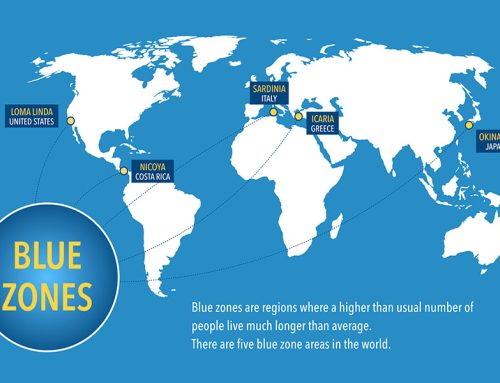Could 10,000 steps a day save you from an early death? If you ever Googled the topic, you may have heard that 10,000 steps a day is a great goal for achieving better health and even decreasing mortality risk.

On the other hand, You may have come across skeptics who question whether 10,000 steps is necessary at all, let alone extend your lifespan…
You might have heard that 10,000 steps a day was originally part of a marketing campaign for a Japanese pedometer (step tracker) company. They were promoting a device called the Manpo-kei (“10,000 steps meter”) ahead of the 1964 Tokyo Olympics.
That’s actually true. It’s also true that at the time, there wasn’t any evidence supporting the 10,000 number.
As a result, you may have seen in your web searches claims that 10,000 a day is a myth, not grounded in science.
You might have heard that you don’t have to walk that much to achieve good health and improve your odds of living a long life. As you’ll see in a minute, that is only partially true.
However, these “debunkers” spoke too soon.
Research has been pouring out of the science community for years suggesting that while 8,000 steps or so is enough to provide significant health benefits, 10,000 steps a day is even a little better, if you have the time to do it.
Here’s an example: A study was published in the Journal Sports Medicine in 2022 (Jayedi et al). The researchers reviewed all previous studies on the relationship between step count and all-cause mortality (death).
They found 7 long-term studies that were well-controlled, including for exercise intensity. There were a total of 28,141 participants and a total of 175,370 person-years. 2310 deaths were reported.
The main purpose of the study was to help clear up uncertainty about the optimal step count per day for health promotion, and investigate the association between step count per day and mortality risk.
Compared to totally sedentary people (only 2700 steps a day), they discovered that walking 10,000 steps a day reduced mortality risk by 56%. Walking 16,000 steps per day reduced risk by 66%.
In addition, compared to 2,700 steps per day:
4,000 steps per day was associated with 16% lower risk
6,000 steps per day was associated with 23% lower risk
8,000 steps per day was associated with 48% lower risk
10,000 steps per day was associated with 56% lower risk
12,000 steps per day was associated with 59% lower risk
14,000 steps per day was associated with 62% lower risk
As you can see, increasing to only 4000 steps a day (from 2700) had some reduction in risk. 6000 steps a day produced even more risk reduction.
At 8000 steps a day, the reduction in risk of mortality became significant (48% risk reduction). At 10,000 steps a day, risk reduction was even higher, but started to level off (only a 6% increase).
14,000 and 16,000 steps a day reduced risk more, but only by 3% with each increment. (The returns diminished greatly). In addition, 12,000 and above is not practical for most people, especially busy people working a full time desk job.
Bottom line: This research supports the 10,000 steps a day goal.
However, it’s important to emphasize that this study also confirmed 2 important findings:
1. Any increase in step count above sedentary can improve health.
2. Most of the benefits are captured at around 8,000 steps a day.
Keeping in mind practical considerations, 8,000 to 10,000 steps a day might be the sweet spot for setting step goals for able-bodied people who want to improve their health.
Whatever your goal is, it helps if you have some motivation. Because let’s face it, it’s not easy to stay active every day without some kind of accountability, incentive and or social support. (A good “reason why,” like living a long healthy life helps your motivation too).
That’s why we are sponsoring another Burn the Fat Step million step challenge.
10,000 steps a day X 100 days = 1 million steps.
But even if your goal is 8000 steps or simply to get out of the sedentary zone (5000 and less), you can still enter for the motivation and camaraderie with our community.
The event is held at the Burn the Fat Inner Circle website in our private Challenge forum. Inner circle members are already automatically registered. But even if you’re not a current Burn the Fat Inner Circle member, you can still enter this health and fitness challenge for free.
To get more details, see the list of prizes, and enter, click the link below now: Don’t delay because if you enter late, you won’t have the full 100 days to log in your steps:
==> 2024 Fall Million Step Challenge
Train hard and expect success!
Tom Venuto
Founder, Burn the Fat Inner Circle
Scientific reference:
Jayedi A et al, Daily Step Count and All-Cause Mortality: A Dose-Response Meta-analysis of Prospective Cohort Studies, Sports Medicine, 20;52(1):89-99.

Tom Venuto is a natural bodybuilding and fat loss expert. He is also a recipe creator specializing in fat-burning, muscle-building cooking. Tom is a former competitive bodybuilder and today works as a full-time fitness coach, writer, blogger, and author. In his spare time, he is an avid outdoor enthusiast and backpacker. His book, Burn The Fat, Feed The Muscle is an international bestseller, first as an ebook and now as a hardcover and audiobook. The Body Fat Solution, Tom’s book about emotional eating and long-term weight maintenance, was an Oprah Magazine and Men’s Fitness Magazine pick. Tom is also the founder of Burn The Fat Inner Circle – a fitness support community with over 52,000 members worldwide since 2006. Click here for membership details






Leave A Comment